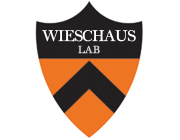Distinct Rap1 activity states control the extent of epithelial invagination via α-catenin.
Publication Year
2013
Type
Journal Article
Abstract
Localized cell shape change initiates epithelial folding, while neighboring cell invagination determines the final depth of an epithelial fold. The mechanism that controls the extent of invagination remains unknown. During Drosophila gastrulation, a higher number of cells undergo invagination to form the deep posterior dorsal fold, whereas far fewer cells become incorporated into the initially very similar anterior dorsal fold. We find that a decrease in α-catenin activity causes the anterior fold to invaginate as extensively as the posterior fold. In contrast, constitutive activation of the small GTPase Rap1 restricts invagination of both dorsal folds in an α-catenin-dependent manner. Rap1 activity appears spatially modulated by Rapgap1, whose expression levels are high in the cells that flank the posterior fold but low in the anterior fold. We propose a model whereby distinct activity states of Rap1 modulate α-catenin-dependent coupling between junctions and actin to control the extent of epithelial invagination.
Keywords
Animals,
Drosophila,
Time Factors,
Green Fluorescent Proteins,
Cell Membrane,
Enzyme Activation,
Embryo, Nonmammalian,
Actins,
Epithelial Cells,
Cell Adhesion,
RNA Interference,
Cell Shape,
Cell Adhesion Molecules,
GTP Phosphohydrolases,
Drosophila Proteins,
Genes, Insect,
Time-Lapse Imaging,
Intercellular Junctions,
GTPase-Activating Proteins,
alpha Catenin
Journal
Dev Cell
Volume
25
Issue
3
Pages
299-309
Date Published
05/2013
ISSN Number
1878-1551
Alternate Journal
Dev. Cell
PMID
23623612

